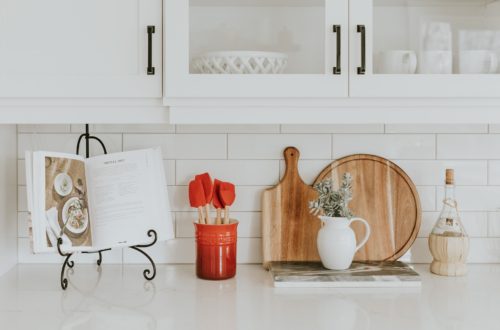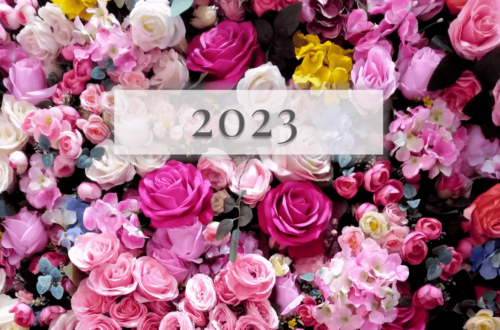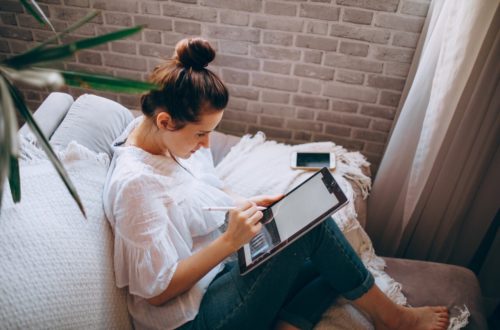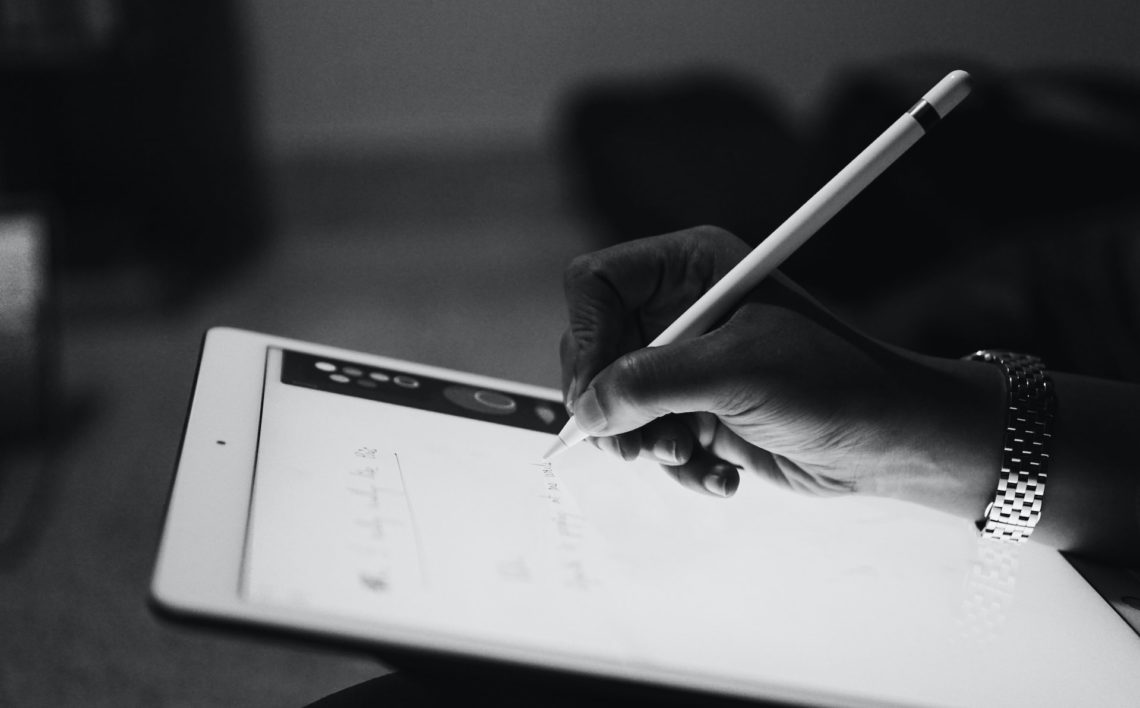
5 Notetaking Styles I Use (Photos Included)
We write them, type them, keep them on our phone, post-its, spare pieces of paper, on our computers… The possibilities are endless for notes. Sometimes they are simply lists of things to do or to remember, but oftentimes, especially for students, notes tend to be a bit more involved.
I have previously written about my transition to digital notetaking and digital planning, and I have even written about my favorite notetaking apps. In this post, I will briefly talk about the notetaking styles I use and show examples.
Note (ha, pun intended) that I am in medicine, specifically in pathology residency. We study materials that are heavy in text details (hello, molecular markers) but that are also picture-heavy (all those gross and microscopic images of disease entities!). I have had to try and vary my strategy over the last few months, and I feel that maybe I have gotten the hang of it, based on my recall and on how my notes have been organized. The styles depend on the reference text, primarily, and the amount of time I have (which is, let’s be real, not much).
But first, why write notes? Sadly, I am not one of those individuals that simply remember concepts and details with one read. The act of writing (even on a tablet) encourages muscle memory, and the way my own words are arranged on a page also helps me remember. Also, while I can reread the highlights that I have marked on a textbook, I prefer to read something in my own handwriting.
This is the crux of the problem that I currently have, which is finding the time to review my notes. Without revising, it will be difficult for me to remember, although the thought that my notes are organized gives me some comfort even close to an exam date. Another difficulty with digital notetaking is the temptation to make everything look pretty, which is a waste of time.
That said, here are the notetaking methods that I use.
The Sentence Method
This style is best for quick and unstructured notetaking. I do this particularly during signouts, when I am trying to record all the relevant information that the attending physician is giving while we are seated around the microscope looking at glass slides. I use the app Nebo so that handwriting to text conversion is easy, and it allows me to read even my originally illegible notes.
Even though it may be difficult to review the concepts afterward, it’s actually not so bad because I do remember the flow of signouts with this strategy, and if I need to do so, I can always rewrite them. Advantages of this strategy include its easy implementation in any subject, although no relationships among ideas are obvious. Other disadvantages include not being able to highlight important points, and it is easy to be lazy and not process ideas but simply write what is being heard, thus losing analysis of the subject matter in the moment.
Here is an example of my notes in this method. Notice my notes are not really sentences, but they are haphazard, without formatting and maybe some typographical errors, but they do follow the flow of the learning experience. I have another example in the same app, with my notes handwritten.
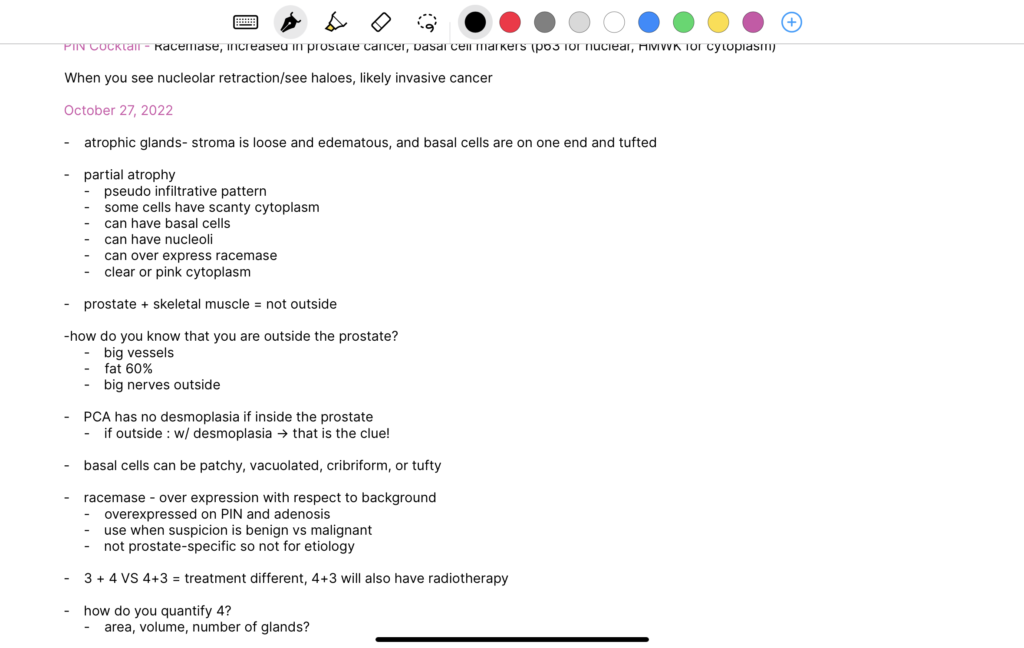

Cornell Method
The Cornell method of notetaking is one of the tried-and-true strategies for taking effective notes> Here, there are two columns, with the left, narrow column for cues and the right, wider column for the notes. There may or may not be a header and footer for a title and/or summary, respectively. I have found this method to be time-consuming but best for remembering and memorizing concepts and facts. However, it is sometimes difficult for me to fit everything in one page.
I have used both Microsoft OneNote and Noteshelf for these kind of notes, and I use this style primarily for large texts. One can argue that my Noteshelf notes from the WHO blue books are more of an outline type, but I have formatted them as Cornell to make finding information more easily.

When reading the Robbins Pocket Companion, I try to put my cues in a question format, when possible and when time allows.
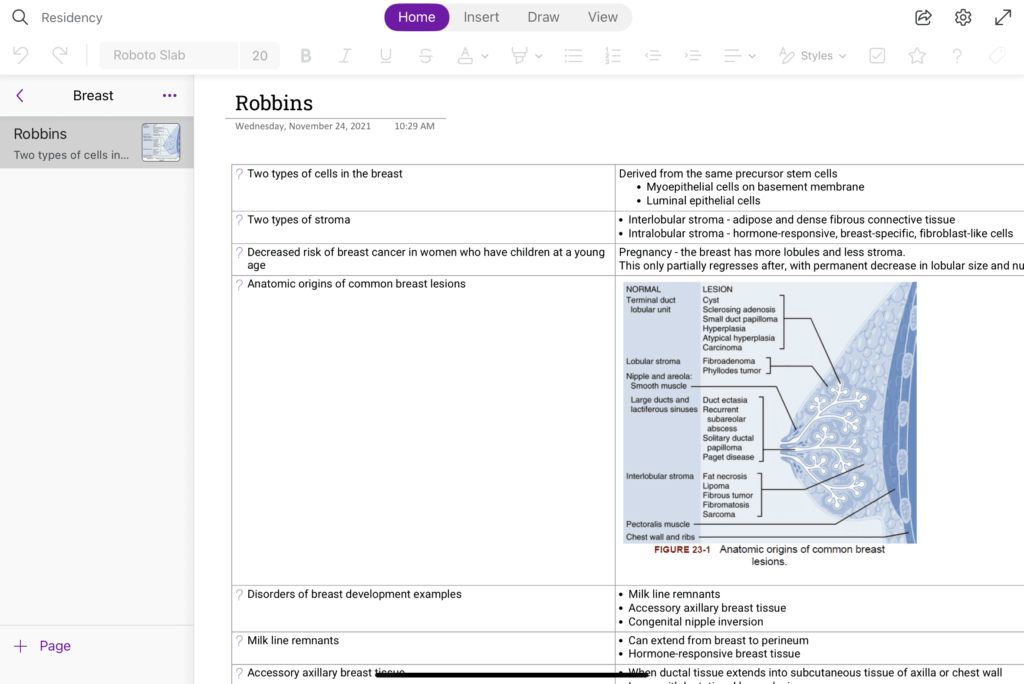
Outline (Type) Notetaking Method
The objective of this style of notetaking is to record information in a clear hierarchy. Information is organized so that it is easy to see the relationships among topics. However, it can be difficult to use with large amounts of information and during live. I do not do a strict outline type of note; however, I do use the Cardflow+ app to write notes resembling an outline for each disease entity. I then map these cards out on a digital board to see how they’re related, and the app allows for hyperlinks. This way, when I encounter differentials, I can simply tap on the text, and it links me to that disease entity’s card.
Looking at it now, as below, there seems to be a larger outline (on the board) and a smaller outline (on each index card).
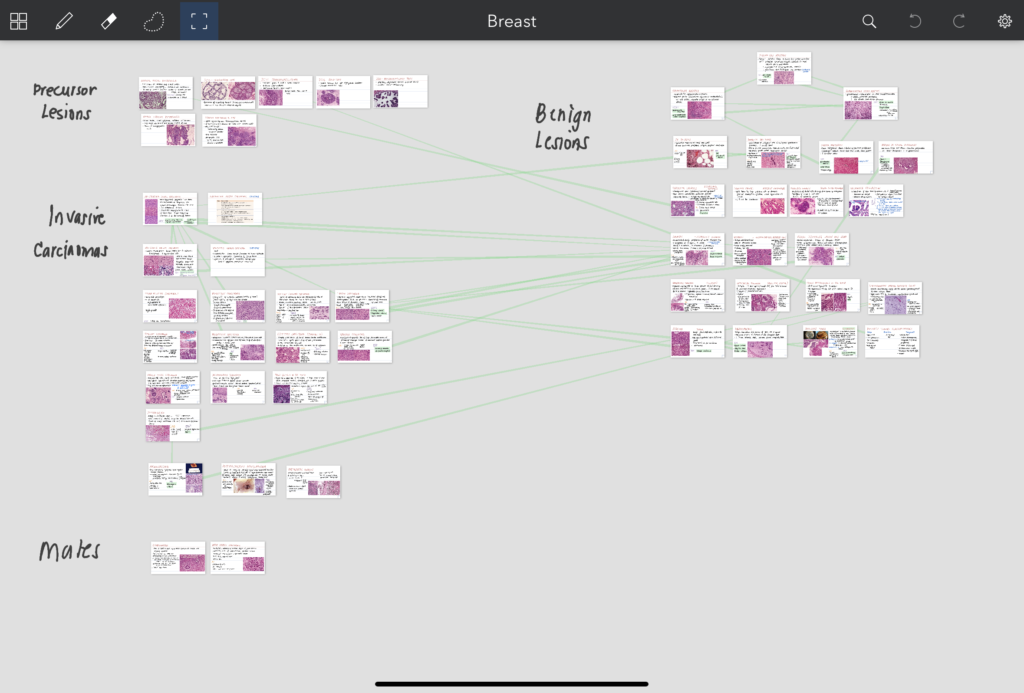
Visual Notetaking
When I first tried this, I was under the impression that I was doing mind mapping. However, a co-resident said I was simply doing visual notes. Mind mapping is a whole new thing, something that I think will require a change in mindset, so I have not gone about doing that. Nevertheless, visual notetaking has changed the way I process concepts and facts while reading, allowing me to immediately record concepts, and it has made it more fun to create notes and study afterwards.
I have tried this method while reading the Survival Guide for Gastrointestinal Biopsies, and I like how I have freedom to write text, draw caricatures of cells, make arrows, segregate into boxes, etc. It was only tricky to decide on a constant format and style, such as the thickness and color of text, highlights, arrows, and sketches. Once that was done, however, the rest of studying went rather smoothly. Of course it took more time than simply writing text done, but I think that given the time, this method is preferable for lighter texts.

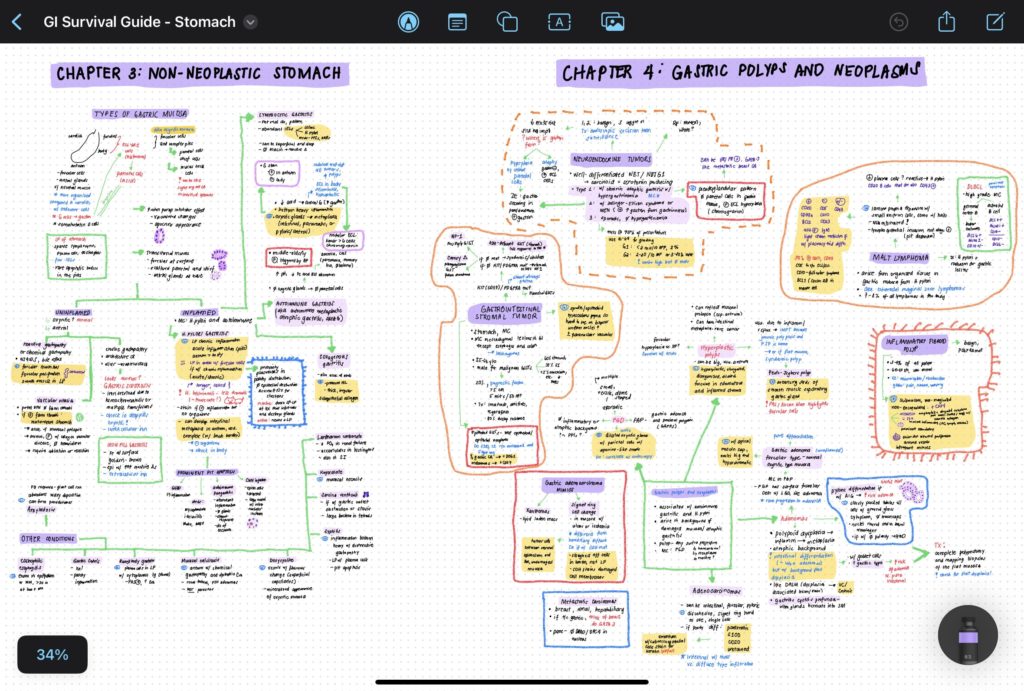
Annotations on Text
Finally, the last and possibly the laziest style of notetaking is annotating text that I read. I usually like Noteful and Notability for this, as both apps can handle large files without crashing. In addition, the pen and highlighter options are easy to access, and presets are quickly made. I use this primarily for skimming through text in a first and quick read, and often later when I am in panic mode and have to go through material that I do not have time to write down.
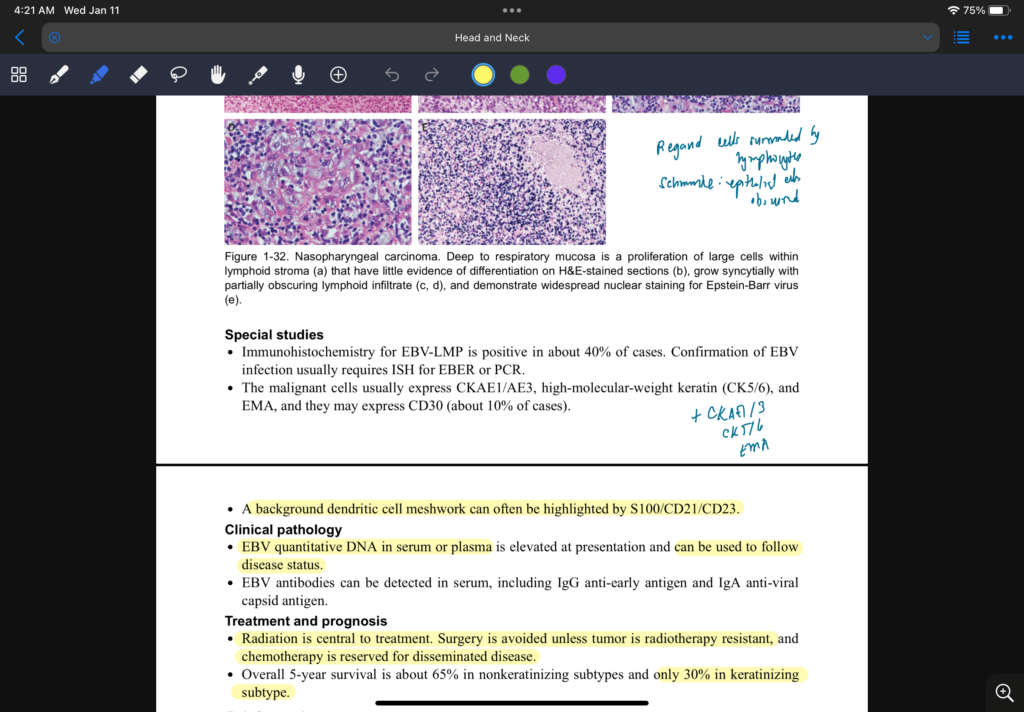
Takeaway
There are other types of notetaking strategies that I do not use. For example, I do not do mind maps or charting, unless you mean that the charts are included within the note itself (I do certainly do that sometimes).
But no matter which style(s) you choose, what is important is that you read (or watch or listen) to your study material, jot down notes according to what makes sense to you and your learning style, and revise them frequently.
How about you? Which notetaking style do you frequently use, and why?


